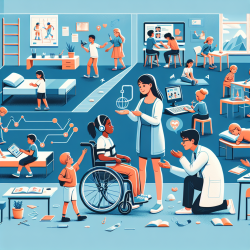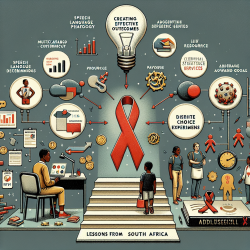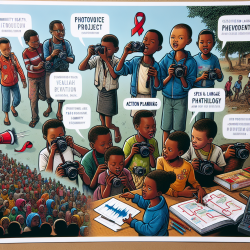Introduction
Juvenile Idiopathic Arthritis (JIA) is a chronic condition that poses significant challenges for children in educational settings. A recent study titled "Patient-Reported Barriers at School for Children with Juvenile Idiopathic Arthritis" sheds light on the various obstacles these children face. Understanding these barriers is crucial for educators, therapists, and special education professionals who aim to create inclusive and supportive learning environments.
Key Findings from the Study
The study conducted a cross-sectional observational analysis of children aged 8 to 17 with JIA. The research revealed several key barriers that these children encounter in school:
- Physical Challenges: Approximately 42.1% of the participants reported difficulties with physical activities such as gym, writing, and sitting for extended periods.
- Need for Accommodations: Only 23% of the children utilized accommodations like modified gym classes, accommodation letters, and computer access.
- Decreased Participation: About 32.2% of the children were unable to participate in class or outdoor activities with peers, and 40.7% faced challenges in gym classes.
- Social Concerns: Many children experienced embarrassment discussing their illness, feared being treated differently, or were accused of fabricating their condition.
Implications for Practitioners
For practitioners working with children with JIA, these findings highlight the importance of implementing effective strategies to mitigate these barriers. Here are some suggestions:
- Enhance Communication: Encourage open dialogue between students, parents, teachers, and healthcare providers to address specific needs and accommodations.
- Promote Awareness: Educate school staff and peers about JIA to foster understanding and empathy, reducing stigma and social anxiety.
- Develop Individualized Plans: Work with special education teams to create tailored educational plans that include necessary accommodations and support services.
- Utilize Technology: Implement assistive technologies to aid in writing and communication, ensuring that students can participate fully in classroom activities.
Encouraging Further Research
While this study provides valuable insights, further research is needed to explore additional strategies and interventions that can support children with JIA in school settings. Practitioners are encouraged to contribute to this body of research by conducting their own studies or collaborating with academic institutions.
Conclusion
Addressing the barriers faced by children with JIA in schools is a collective responsibility. By implementing the outcomes of this research and engaging in further exploration, practitioners can significantly improve the educational experiences of these students. To read the original research paper, please follow this link: Patient-Reported Barriers at School for Children with Juvenile Idiopathic Arthritis.










